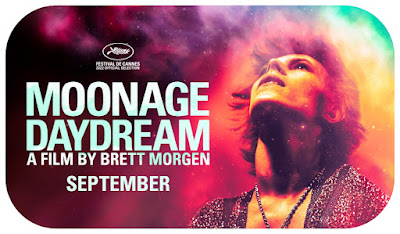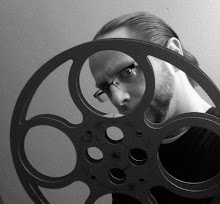Last week, Reel Speak celebrated the 30th anniversary of Michael Mann’s THE LAST OF THE MOHICANS (read that HERE). That film, set in 1757, makes use of weaponry such as long-rifles, swords, tomahawks, and one hell of an axe-club that one of the heroes uses to dispatch the villain. That deadly cinematic prop got this Blogger thinking about the Best Cinematic Weapons. Specifically: handheld weapons that take skill to wield.
Ever since the dawn of cinema, weapons have had a central role in settling conflicts and driving plots. Early Westerns made icons out of rifles and revolvers held by Broncho Billy Anderson and John Wayne, and swashbuckling stars such as Errol Flynn made careers out of the sword. In the 1970’s, guns seemed to be everywhere: from THE GODFATHER films, to DIRTY HARRY, to SCARFACE, to TAXI DRIVER. In the 1980’s, there was a return to sword-love with CONAN THE BARBARIAN and blades with cool names like Excalibur, and combat vet John Rambo made a certain hunting-knife a household name. The Eighties also saw a lot of gun-love with the RAMBO and LETHAL WEAPON franchises. The best cinematic weapons are the ones that are recognizable after decades, and have such a screen-presence that they’re practically a character in the film.
Blogger’s note: Some of these weapons have several versions, so their first screen appearance will be cited. And again, this is all about hand-weapons…so no Death Stars here.
Now, let’s settle some conflict…
10. The Bride’s Hattori Hanzo Sword
From: KILL BILL VOL. 1 (2003), and KILL BILL VOL. 2 (2004)
Quentin Tarantino’s bloody affair of revenge could not have worked without our heroine, played by Uma Thurman, in ownership of the right tool for the right job. Her magnificent, elegant, yet deadly sword was strong enough to cut through other swords, along with the heads, scalps, arms, and legs of her enemies. Thanks to an excellent sequence showing the origin of the sword, it becomes a literal, vital companion to The Bride.
9. Proton Pack
From: GHOSTBUSTERS (1984)
Sci-fi films have had more than their share of futuristic guns, with iconic boom-makers from ROBOCOP (1987), BLADE RUNNER (1982), and eleven STAR WARS films deserving mention. GHOSTBUSTERS turned the tables of how we perceive most guns, stepping away from linear shooting and getting into wavy, cool-looking streams. Fun, iconic, and timeless. It's not really a weapon by design as its primary function is to contain ghosts and not obliterate them...unless of course, we cross those streams.
8. Ol’ Painless
From: PREDATOR (1987)
The alien killer from space has some cool weapons, ranging from retractable blades to laser guns, and the platoon of commandos it goes up against is also well-equipped with U.S. Army guns and blades. Jesse Ventura’s character had the fun of lugging through the jungle a big gun typically found mounted on the bottom of choppers, and even more fun firing the damn thing. Ol’ Painless mowed down enemies and half the jungle, and the sound it made, like a machine from hell, was unforgettable.
7. Pulse Rifle
From: ALIENS (1986)
Speaking of unforgettable sounds, James Cameron made sure to outfit his platoon of space Marines with kickass weapons, with the primary standard-issue gun making one of the coolest sounds. The rifle was doubled-up with a grenade launcher, and had a unique look which combined science fiction with real-world mechanics.
6. William Wallace’s Sword
From: BRAVEHEART (1995)
Just like owners looking like their pets, there are many instances in film where a character is perfectly matched with their weapon, and Mel Gibson’s take on Scottish freedom fighter William Wallace is a perfect example. Wallace is shown as a larger-than-life character, so he deservingly has a sword that is larger than most men. It has become instantly recognizable over the years, and its inclusion in the lonely yet defiant final shot of the film speaks volumes.
5. Captain America’s Shield
From: CAPTAIN AMERICA: THE FIRST AVENGER (2011)
This is a bit of a cheat, as Captain America’s shield was an American symbol long before the Marvel Cinematic Universe put it in the hands of Chris Evans. The shield made two quick cameos in IRON MAN (2008), and IRON MAN 2 (2010) before finally seeing action in Cap’s first solo outing, and once it started flying around mowing down Hydra soldiers, there was no doubt a new icon in cinema had been born. What makes it even more special is that it can protect just as well as it can attack, which is exactly what Captain America does best. Of all the weapons on this list, this is the one that stands for many different things.
4. Freddy Krueger’s Knives
From: A NIGHTMARE ON ELM STREET (1984)
Horror has had a collection of weapons like machetes, chainsaws, hooks, kitchen knives, and axes. Where most horror goons walk around with everyday items, the most original weapon came with the most original character of Freddy Krueger and his knived glove. Freddy hacks and slashes us in our dreams and the real world, and who could forget the sickening sound of those four knives being scraped on metal. The stuff nightmares are made out of.
3. James Bond’s Walther PPK
From: DR. NO (1962)
Similar to the horror genre, the villains of James Bond have had their memorable weapons, such as razor-brimmed hats, metal jaws, and golden guns. The one weapon in the five decades of 007 films that everyone remembers is the one carried by the man himself. A small, yet deadly gun…it is a gentleman’s weapon, and over the years has earned its status as a film icon along with Bond’s car and catchphrases.
2. Indy’s Whip
From: RAIDERS OF THE LOST ARK (1981)
One of the best and earliest surprises in RAIDERS OF THE LOST ARK is when our famous archeologist and obtainer of rare antiquities fends off an ambush using a bullwhip. Where most heroes would pull out their pistol and blast away, Indiana Jones had a style of his own. The whip became an extension of the character, who used whatever was around him to fight, survive, and solve problems. Indy’s whip was a weapon but also a tool, and that great whoosh-snap sound will always be associated with the character.
1. Your Father's Lightsaber
From: STAR WARS (1977)
When STAR WARS debuted in 1977, it stole our breath in many ways. But it was the moment Luke Skywalker ignited his father’s lightsaber where everything changed. At that point in the film, we all wanted to shoot a laser gun, but after Luke ignites and waves around his new laser-sword, every kid ran home looking for a broomstick or cardboard tube to fight with. The look, sound, and eventual usage in a duel was mesmerizing, and still is today. Over the years there have been many variations in design, blades, and colors (providing something for everyone), but this is the one that started it all, and changed the way we look at cinematic weapons forever.
REEL SPEAK'S TOP 10 BEST CINEMATIC WEAPONS
- Your Father's Lightsaber
- Indy's Whip
- James Bond's Walther PPK
- Freddy Krueger's Knives
- Captain America's Shield
- William Wallace's Sword
- Pulse Rifle
- Ol' Painless
- Proton Pack
- The Bride's Hattori Hanzo Sword















